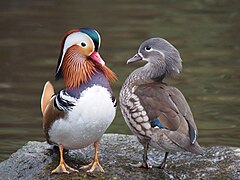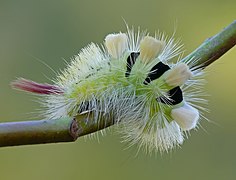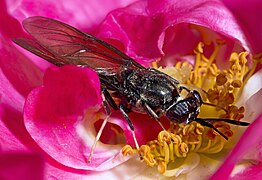Página principal
|
Bem-vindo à |
Navegação de Táxons
|
Explore a Wikiespécies
Colaboração com ZooKeys Foi anunciada uma colaboração entre a Wikiespécies e ZooKeys. As imagens das espécies do ZooKeys serão enviadas para a Wikimedia Commons e utilizadas na Wikiespécies. |
Species of the monthGreater weeverSome facts about this species: Total length: 10–25 cm depending on geographical location Habitat: Mostly muddy or sandy grounds in depths ranging from shallow water down to 150 meters. During the day they rest on the bottom, often buried with eyes and tip of first dorsal fin exposed. They are believed to be free-swimming during nighttime Distribution: The eastern Atlantic coastline from Norway to Morocco, extending to the Mediterranean, Aegean and Black Seas. Diet: This species is an ambush predator that mainly feeds on decapods (Decapoda), bonefish (Teleostei) and opossum shrimps (Mysida). Reproduction and spawning behaviour: The Greater weever is an oviparous spawning fish that lays its eggs into the pelagic zone. The reproduction period seems to lasts from June to October. The larvae have a size of about 4.8 mm to 6.8 mm and hatch after approximately three months. Toxicity: The name "weever" is thought to originate from the Anglo-Saxon word "wivre" which translates as "viper". This species is mostly and notoriously known for its venomous spines that can inflict serious injuries on humans through accidental stinging. The venomous apparatus of Greater weever consists of one spine on each operculum and five to eight dorsal spines, with the glands producing venom located in the derma of the fish. The potentially lethal protein component in the crude venom of the Greater weever is a is called Dracotoxin. Conservation status: Least Concern (IUCN 3.1), assessed July 14, 2014. First described: Linnaeus, C. 1758. Systema Naturae per regna tria naturæ, secundum classes, ordines, genera, species, cum characteribus, differentiis, synonymis, locis 250–251.
|
|
O Wikispecies existe graças à Wikimedia Foundation, entidade sem fins lucrativos que gere projectos em diversos idiomas e de conteúdo livre:
|









